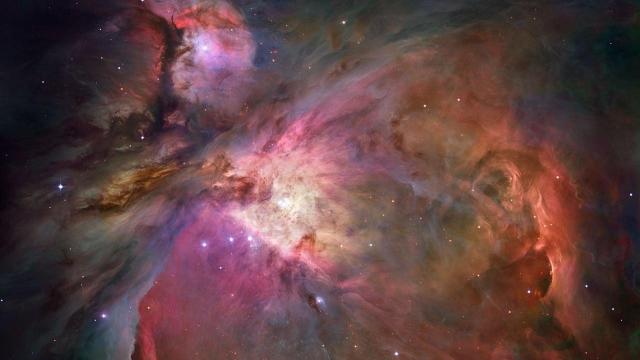A team of researchers recently reported that a little over 2 kg of helium-3 leak out of Earth every year, an indication that our planet formed in a solar nebula.
Helium-3 is a very ancient isotope of helium gas; practically all helium-3 emerged from the Big Bang, though some also comes from the radioactive decay of tritium. But the primordial helium-3 — the stuff that synthesized in the aftermath of the Big Bang — ended up in clouds of gas and dust called nebulae that give rise to stars like our Sun and, of course, planets like Earth.
The team studied the rate at which helium-3 leaks out of Earth through its mantle and used it to estimate the total amount of the isotope that could be in our planet’s core. Their research was published this week in Geochemistry, Geophysics, Geosystems.
“It’s a wonder of nature, and a clue for the history of the Earth, that there’s still a significant amount of this isotope in the interior of the Earth,” said Peter Olson, a geophysicist at the University of New Mexico and lead author of the new study, in an American Geophysical Union release. Olson added that the 4.2 kg (about 2,000 grams) of helium-3 that leak out of the planet annually are “about enough to fill a balloon the size of your desk.”
A leading idea about how our solar system formed is the solar nebula theory, in which a cloud of rotating debris condensed to form the Sun and planets over billions of years. Olson’s team reported that most of the helium-3 leakage comes from Earth’s mid-ocean ridge system. They believe the helium-3 in the planet’s core accumulated when Earth was in the early stages of its formation.
The researchers remain unsure about how much helium-3 the core actually acquired as it formed and how much it’s given up since then. If the researchers find other gasses associated with nebulae, like hydrogen, emanating from the Earth at similar locations and rates to the helium-3, that would be a tell-tale sign that the core is indeed where the helium is hiding.
In total, the team calculated that there could be between 10 teragrams (1 million metric tons) and a whopping petagram (1 billion metric tons) of helium-3 in the core. That’s a vast range, but Olson noted in the release that “there are many more mysteries than certainties.”
Regardless of the true amount, though, the helium leak lends credence to the solar nebula theory, like a fart of truth that our world has been slowly letting go over 4 billion years.
More: The First Exoplanet Known to Contain Helium Is a Truly Alien World
